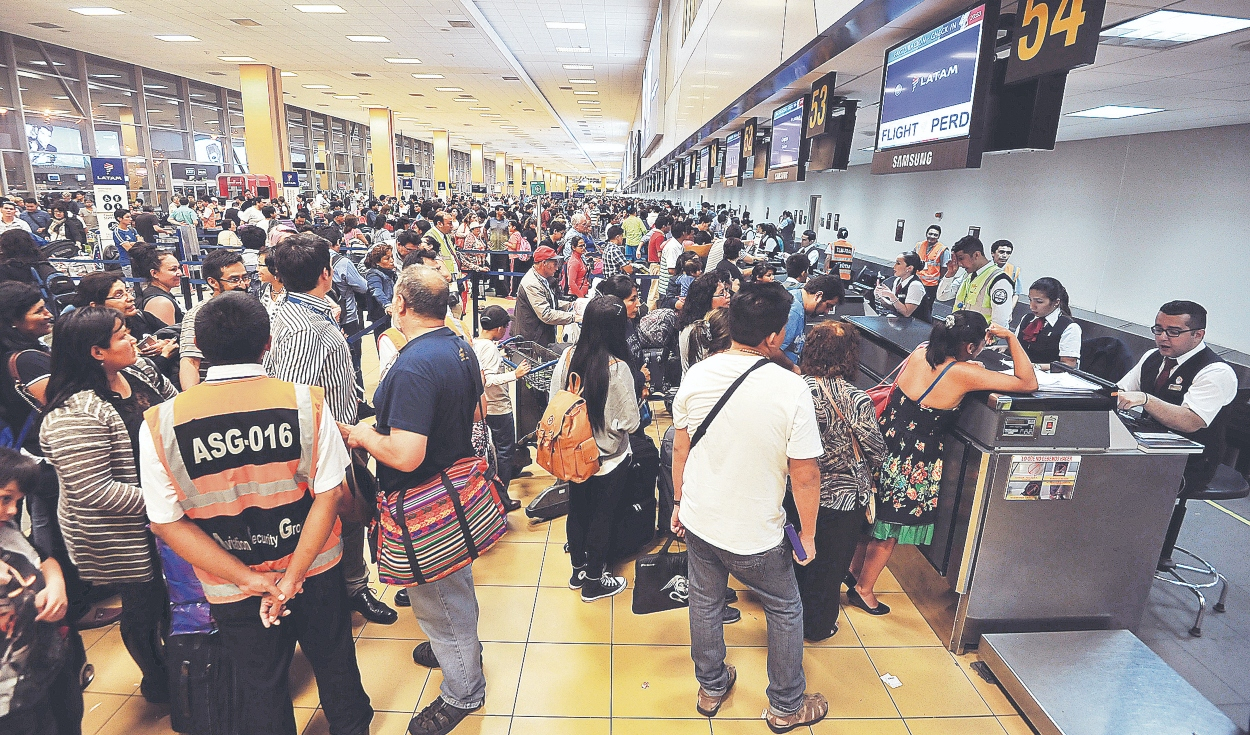
The pandemic crowned a 30-year cycle in which more than 3.3 million Peruvians – almost 10% of the current population -, mostly professionals, emigrated from the country. And the numbers have been increasing: in the first six months of 2023 alone, another 415,393 migrated, according to the National Institute of Statistics and Informatics (Inei).
It is also estimated that the migration of Peruvian professionals abroad has quadrupled since then. In days when the properly employed population increases slightly by 3 million 153,400 (+3.4%) at the national level, this dangerous flight of talent further compromises the figures for formal professional employment.
For example, a study by the Institute of Peruvian Studies (IEP) from August 2023 – when the trend was becoming more evident – revealed that 6 out of 10 young people were looking to emigrate: an increase from 36% to 47% in just one year. And it hasn’t stopped in 2024.
This crisis reveals a harsh social climate for the development of citizens in their own country and, although the evolution of remittances can represent support, it also limits the generation of new companies.
Diego Tuesta, CEO of Catapulta, reveals that a Peruvian student who migrates hardly returns to the local market, since the income can be even 40% lower than the degree obtained. In some way, this trend also has a domino effect on competitiveness and formal employment.
Although professional demand, he explains, is in place at the moment, it does not imply that the lack of specialization and talent crisis is a problem for the local growth of companies and, with it, less development of the formal labor market.
Given this, he believes that firms should opt for more specialized hiring processes and even flexible conditions regarding schedules. But the barrier of not reducing productivity still needs to be overcome.
“If I have a master’s degree in the environment abroad, let a company challenge me to rescue that purpose, even if they can’t pay me more. But getting to that point requires a lot of work,” he emphasizes.
4 day work week
Recently, countries such as the United Kingdom and Germany have tried four-day work weeks, without reducing their productivity. Would it help in Peru?
Jonathan Zárate, HR manager at Yanacocha, says that, in addition to financial compensation, avoiding the flight of professional talent also involves including promotion, personal development and well-being policies in companies.
In this sense, he points out that, according to research carried out in Latin America, the most important variables to motivate a worker are leadership experience, growth opportunities, the compensation factor and flexibility, in the latter, the 4-week work week. days.
Therefore, he concludes, the discussion about offering better conditions in the formal sector should not only contain greater flexibility of schedules, but also the adaptation of other previous stages of loyalty, as occurs in the extractive sector with the labor promotion of women.❖
Reactions
Diego Tuesta, CEO of Catapulta
“The discussion of whether hybrid work is better than in-person work has not been resolved, since both have feared good results from their front. But the important thing is that the worker has that possibility.”
Jonathan Zárate, HR manager Newmont
“We consider that there is enough Peruvian talent. But we cannot ignore the reality of engineering or geology careers where 1 in 5 students are women. “More promotion is needed.”
Data
Preference. The choice to emigrate increases to 60% in the 18 to 24 year old group. They are followed by those from 25 to 39, with 51%.
Eye. 65% of employers claim to have problems filling vacancies, according to ManpowerGroup Perú.
Source: Larepublica
Alia is a professional author and journalist, working at 247 news agency. She writes on various topics from economy news to general interest pieces, providing readers with relevant and informative content. With years of experience, she brings a unique perspective and in-depth analysis to her work.












